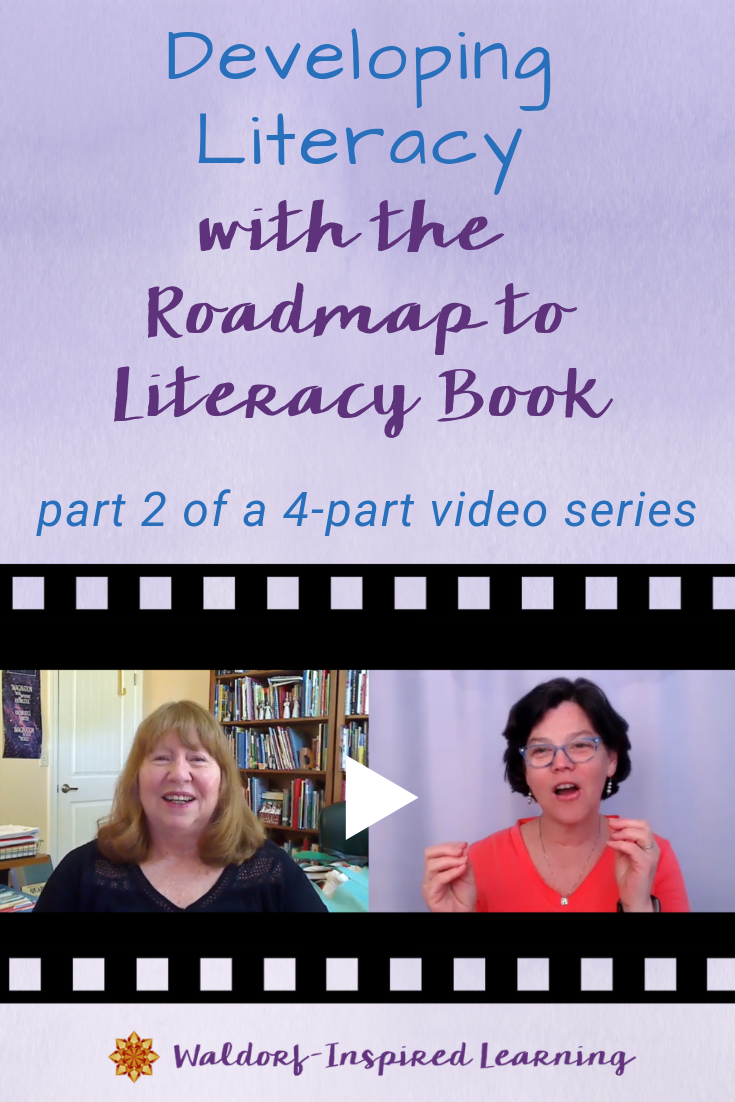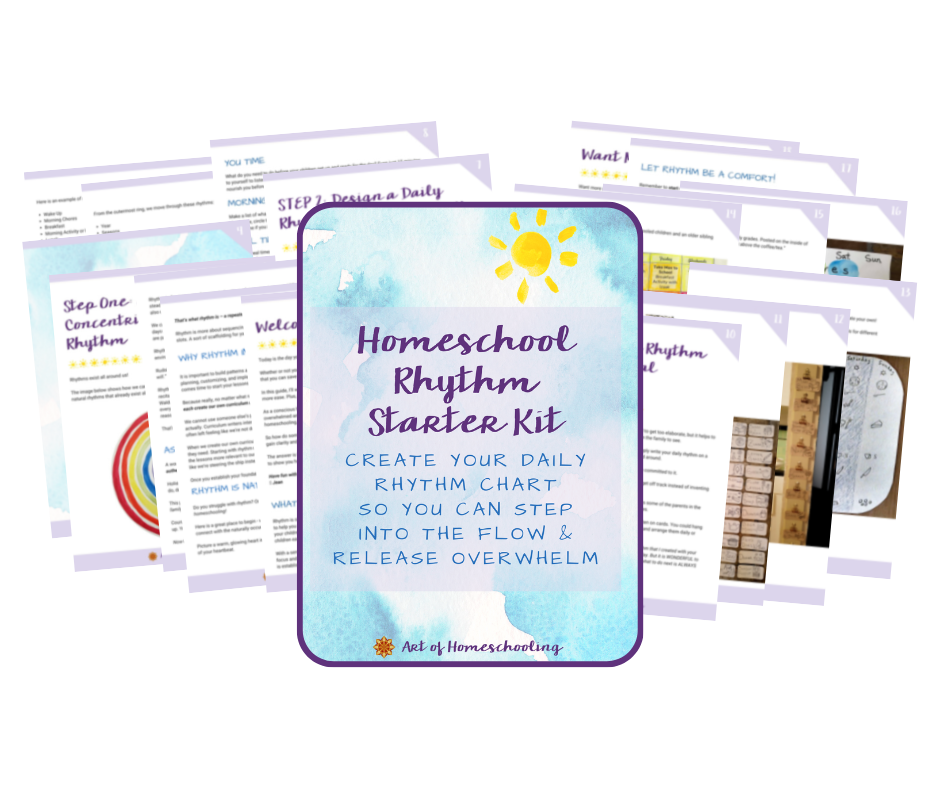In this second interview in a series of four, I had the opportunity to talk again with Janet Langley, one of the authors of The Roadmap to Literacy: A Guide to Teaching Language Arts in Waldorf Grades 1-3. More great ideas for helping homeschoolers with developing literacy with children including writing, reading, spelling.
Janet is a former Waldorf class teacher and she wrote the book with Jennifer Militzer-Kopperl, a private remedial educator who works with Waldorf students. They are both accredited Waldorf teachers.
You can get a copy of the book at Janet’s website, Waldorf Inspirations. Be sure to visit the site for many wonderful (free) ideas and resources for early childhood and each grade, 1-8.
In this conversation, Janet and I talk about how to use the book plus a few key concepts: kid writing, phonics rules, the “sacred nothing” of the 3-day rhythm, and the difference between main lessons and practice sessions.
Janet has years of experience as a classroom teacher, and I have years of experience as a homeschooling Mom. And now we both mentor teachers and homeschoolers. If you haven’t had a chance to watch the first interview, where we introduce the 5 phases of literacy, here’s a link: Developing Literacy in the Early Elementary Grades.
In this second interview in the series of four, we’re going to lay the groundwork for our upcoming conversations about planning main lessons and practice sessions.
Developing Literacy with The Roadmap to Literacy Book
Here are some highlights from our conversation:
- Janet suggests rebinding The Roadmap to Literacy book into 3 smaller books because you’ll use each section differently.
- Great ideas for having children create their own phonics rules book, adding examples of the sound combinations that they discover in their daily lives.
- Writing comes before reading in the Waldorf approach, and children can have fun writing stories and playing with their writing.
“If we proceed rationally we will get far enough in the first grade so that the children will be able to write simple things that we say to them or that they compose themselves. If we stick to simple things, the children will also be able to read them.” -Rudolf Steiner, Discussions with Teachers
- The 3-day rhythm is a huge “sacred nothing”! Sacred Nothings or Waldorf Myths are “questionable traditions which have evolved over the years with little consciousness around them. Little or no basis in the teachings of Rudolf Steiner.”
- Differences between main lessons and practice sessions.

This interview is the second in a series of four interviews with Janet to help you understand how literacy develops and how the Waldorf approach can support each child’s development.
You can get a copy of the book at Janet’s website, Waldorf Inspirations. Please note that if you are outside the United States, you can now get your copy as a print-on-demand book to save you the huge expense of shipping.
The Four Developing Literacy Interviews:
Developing Literacy in the Early Elementary Grades
Developing Literacy with The Roadmap to Literacy Book (that’s this one!)
How to Plan Main Lesson Blocks That Promote Literacy
How to Plan Literacy Skills Practice Sessions



3 Comments